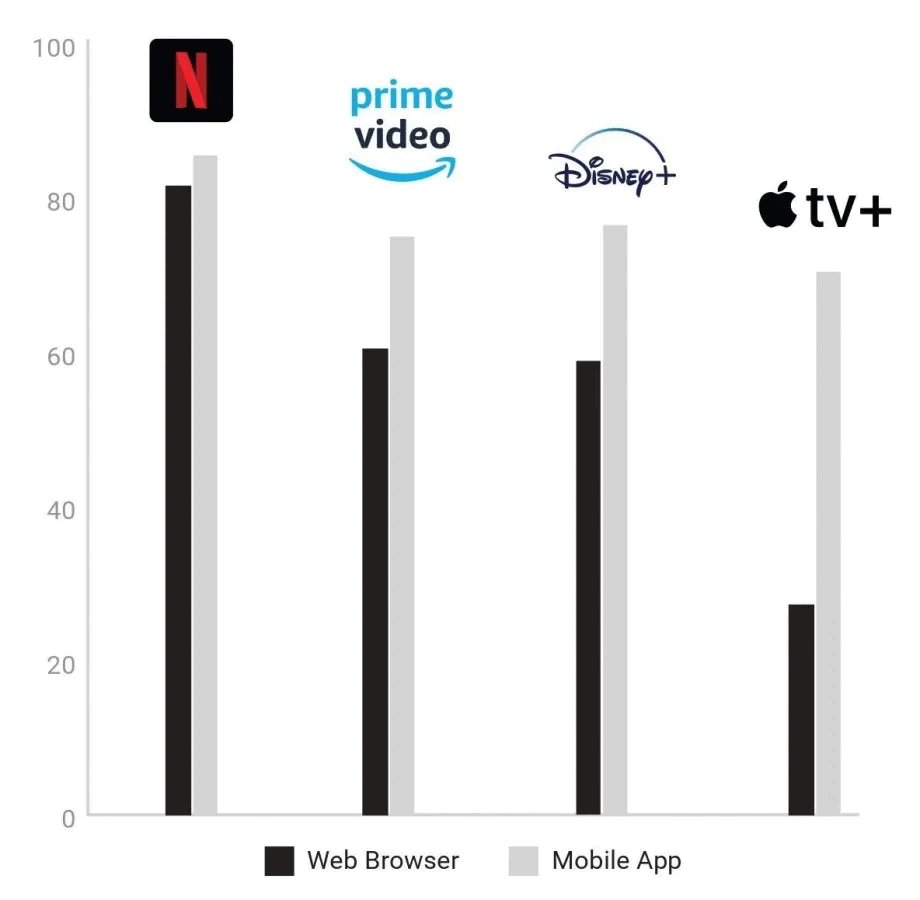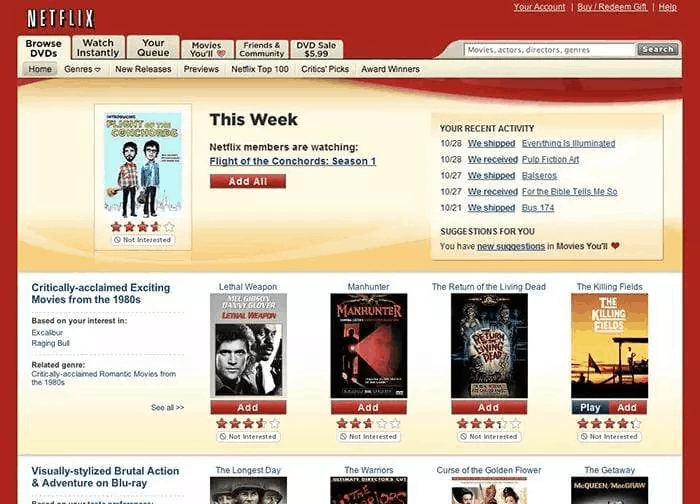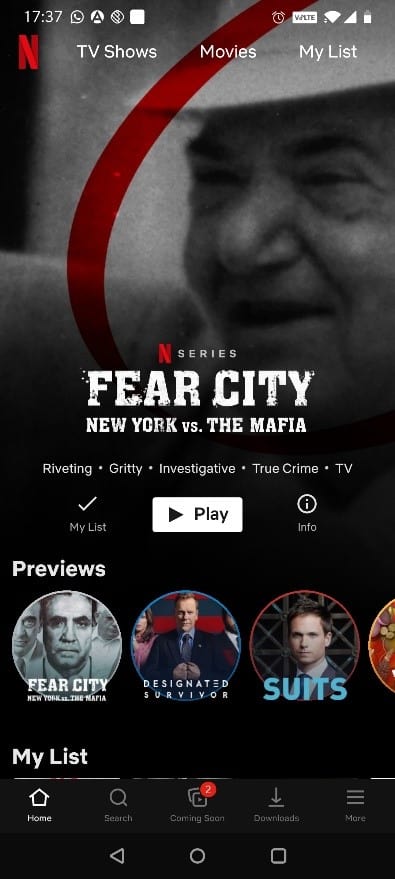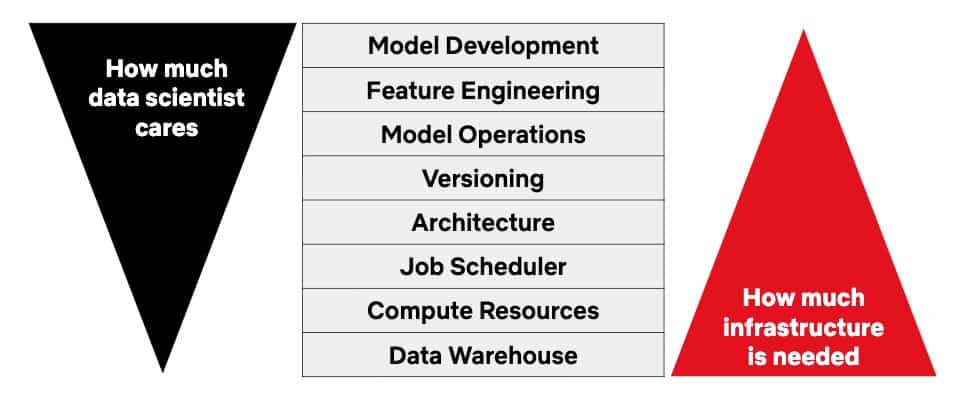I am sure the lock-down has given us enough time to catch-up or binge watch on Netflix (well, at least for many of us). I am no exception – From Dirty Money to Shooter to Bodyguard to Fauda to Mindhunter to The Fall to The Last Dance the content itself has no doubt been the key draw here. But every time I log in to Netflix, there is this tingling expectation of how in some measure they have bettered my user experience. I certainly believe that in Netflix’s case the experience of the product is bigger than the product itself.
A recent user experience study conducted by a European TV solutions provider TeraVolt, analysing the user experience of various streaming services in 28 categories has shown that Netflix scored 83 out of a total of 100 possible points, followed by Amazon Prime Video (68) and Disney+ (67.5). Apple TV+ follows with just 49 points.

Nobody should be surprised. From the skip button, to my list, to previews, to trending now, to top ten, to because you watched, to continue watching from where you left off, that too on any device…..the list is endless. If there is a company that epitomises a seamless customer experience, it is Netflix. 15% of the world’s web traffic goes to Netflix across 190 countries! The transformation has been mind boggling considering that Netflix started out as an old-school DVD rental business in 1997. I just tried to do some research on the past and figured out this is what the screen looked like in 2008 –

The user experience has continuously evolved as people all over the world watch on all kinds of devices under all kinds of network conditions. As of today, this is what the mobile app home page looks like:

The challenge is when your experience is not only industry-leading but setting global standards in user experience, how do you keep evolving it without disappointing viewers? As you can see above in the last 12 years Netflix has undergone an incredible transformation. I believe this has been built on a culture of ‘viewer first’ and the principle of test and learn. I kind of spent time to figure out what is the magic potion?
Netflix applies data science to hundreds of use cases across the company, including optimizing content delivery and video encoding. They have a Machine Learning Infrastructure team, the question they asked their data scientists was: “What is the hardest thing for you as a data scientist at Netflix?” They were expecting answers related to large-scale data and models, and issues related to modern GPUs. Instead, they got stories about project delays – where getting the first version to production took surprisingly long — mainly because of mundane reasons related to software engineering. They also heard stories about difficulties related to data access and basic data processing. In meetings data scientists discussed how to best version different versions of their models without impacting production. They saw how excited data scientists about modern off-the-shelf machine learning libraries were and at the same time also witnessed various issues caused by these libraries when they were casually included as dependencies in production workflows.
It did not take them long to realise that nearly everything that data scientists wanted to do was technically doable, but it was not easy enough. It was then that they decided that they would focus their energy on improving the data scientist’s productivity by being fanatically human-centric which kind of logically led them to the following assessment of what the data scientists care about and what infrastructure is needed:

This led them to – Metaflow a human-centric framework for data science. Over the past two years, Metaflow has been used extensively at Netflix to build and manage hundreds of data-science projects from natural language processing to operations research. I believe they are running hundreds of projects and experiments at any given time. Metaflow is packed with human-centric details which aim at boosting a data scientist productivity. Very early on they realised that there are excellent solutions available for each layer of the typical data science stack, but stitching the layers together was a challenge for data science projects. They wanted Metaflow to become a substrate that integrates the layers into an easy-to-use productivity tool, optimized for data science use cases. Metaflow, a data science framework that Netflix open-sourced in December 2019, is designed around the idea of independent layers:

Metaflow does not try to abstract away the existence of the separate layers. They believe that problems are solved by people, not by tools. A statement and philosophy that I strongly believe in. Metaflow provides a unified API to the infrastructure stack that is required to execute data science projects, from prototype to production.
The founding tenets of the Metaflow philosophy are:
- Grounded on common, real-life business-oriented ML use cases
- Manage entropy with code
- Fanatic focus on the usability and ergonomics
- Enable collaboration
- First-class support for both prototyping and production
- Straightforward scalability
- Pragmatic approach to data access and processing
- Failures are a feature
The Los Gatos based, Netflix data-science team has open-sourced its Metaflow Python library, a key part of the ‘human-centred’ machine-learning infrastructure it uses for building and deploying data-science workflows. Netflix uses machine learning across all aspects of its business, from screenplay analysis, to optimizing production schedules, predicting churn, pricing, translation, and optimizing its giant content distribution network. It offers the following description of its Python library on the new metaflow.org website: “Metaflow helps you design your workflow, run it at scale, and deploy it to production. It allows you to inspect results easily in notebooks.” Metaflow is a tool according to them that pushes the limits of python.
“If the Starbucks secret is a smile when you get your latte, [Netflix’s secret] is that the Web site adapts to the individual’s taste.” said Reed Hastings. Now we know one of the key enablers to their secret sauce – Metaflow. Keep watching and keep marveling at how they seamlessly get you addicted!

